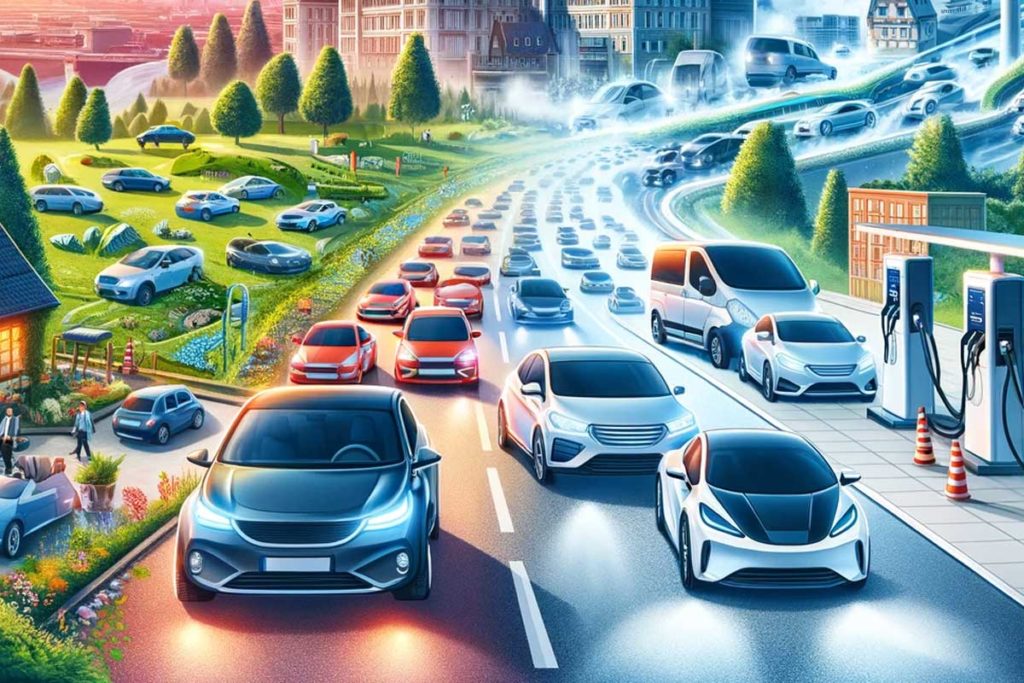
Energy transition is a priority for the European Union, but the road ahead seems strewn with pitfalls. A recent report by the European Court of Auditors highlights the major challenges facing the automotive industry. in the reduction of CO2 emissions and the widespread adoption of electric vehicles.
As a reminder, since 2020, CO2 emissions from new cars have begun to fall significantly. However, during the previous decade, the industry largely focused on optimizing laboratory results (NEDC), often to the detriment of real-world performance on the road. The switch to the WLTP homologation cycle in 2017 and the stricter emissions targets introduced in 2020 have finally brought about a noticeable improvement. However, emissions from diesel engines remained stable, and those from gasoline engines fell by just 4.6 %. Progress in engine efficiency has been offset by an increase in vehicle mass and power..
To reduce CO2 emissions, the European Court of Auditors emphasizes the electric car, which faces several major obstacles. The first is Europe's dependence on batteries imported from Asia, a problem that calls for a strategy to boost local production. Secondly, the recharging infrastructure remains inadequate, with 70 % charging stations concentrated in just three countries: France, Germany and the Netherlands. Which confirms why Italians shun the electric 500, even though it's Made in Italy.

Moreover, according to the report, the cost of electric vehicles remains prohibitive for many consumers, particularly in member states with lower GDP per capita. As electric vehicles are on average more expensive than internal combustion models, this could encourage residents of these countries to buy electric vehicles. keep their combustion-powered cars longer. The average age of cars in the EU has risen from 7.4 years in 2014 to 12 years in 2021.

The only hope for these countries is the announcement of more affordable electric models planned for the next two years, such as the Citroën ë-C3, Fiat Panda, Tesla Model 2, Renault 5 and Volkswagen ID.2. These models could play a key role in accelerating the transition to electric cars, but that doesn't solve the problem of charging station infrastructure.
Meanwhile, Italian brands will continue to offer and even extend the service life of their thermal models. with hybrid versions such as the Fiat Pandinathe new Alfa Romeo Junior, and to a different extent, Maserati may back away from the 100 % electric car, Lamborghini has just presented its URUS PHEV.and Ferrari, which has declared that it will offer combustion engines for as long as customers want them.
You can read the full report here.
Without a range of internal combustion engines and electric motors, manufacturers who rely on a single technology are dooming themselves.
As the article says, many countries are not yet ready for electric cars, because there aren't enough charging stations. The desire to reduce emissions is all very well, but with the cost of electric cars, many people will keep their old petrol or diesel cars longer, and increase overall pollution.
Instead of changing their diesel car for a gasoline engine that emits less CO2, they want to force people to switch to electric, and it's not working. As a result, we're going to prolong the life of old, polluting cars, which will have the opposite effect of what governments want, namely to reduce CO2 emissions.
And other technologies, such as hydrogen, bioethanol or synthetic gasoline, should be developed.
If I buy an electric car one day, it will be for city driving and short journeys, but certainly not to struggle if I want to make a long trip like Paris-Nice, or to take small roads with few terminals. Having an electric car is possible if you can afford the luxury of several cars, otherwise you'll have to give it up.